Posté par Olivier Bonfait, le 13 septembre 2022;
- Date limite : 23 septembre 2022, 23 septembre 2022
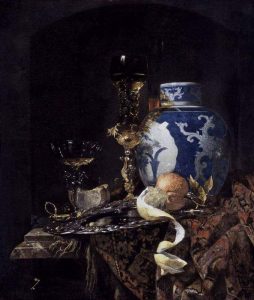 3 PhD positions in Art History, University of Utrecht 3 PhD positions in Art History, University of Utrecht
University of Utrecht, Jan 01, 2023 Application deadline: Sep 23, 2022
The art of the Dutch ‘Golden’ Age has many non-Western elements, from the Islamic scarf of Vermeer’s Girl with Pearl Earring to Rembrandt’s Chinese porcelain. The project ‘The Dutch Global Age’ (NWO-Vici) examines how Netherlandish art has contributed to a global worldview and demonstrates the contemporary relevance of Netherlandish Old Masters in a globalizing world.
We are seeking three candidates for PhD positions in this project. The team will explore interactions between the arts of the Netherlands and the world beyond Europe. It will combine different approaches: technical . . . → En lire plus
Posté par Olivier Bonfait, le 1 octobre 2021;
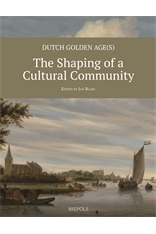 Dutch Golden Age(s): The Shaping of a Cultural Community Jan Blanc ed. Brepols Dutch Golden Age(s): The Shaping of a Cultural Community Jan Blanc ed. Brepols
243 p., 5 b/w ill. + 60 colour ill., 216 x 280 mm, 2020 ISBN: 978-2-503-59107-0 Languages: English Retail price: EUR 85,00 excl. tax Pour acheter l’ouvrage sur le site de l’éditeur, cliquez ici.
This volume critically (re-)examines the key building blocks of the construct of the Dutch Golden Age, their origins, the numerous and diverse purposes they have served and their long-lasting cultural and historiographical impact.
For a long time, the Dutch Golden Age has been regarded as a historiographical construction or reconstruction dating from the . . . → En lire plus
Posté par Antonin Liatard, le 22 septembre 2021;
- Date et lieu des journées d'étude : 7-8 octobre 2021, Paris
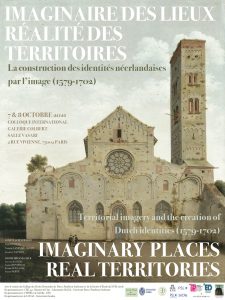 Journées d’étude : « Imaginaires des lieux, réalité des territoires – La construction des identités néerlandaises par l’image (1579-1702) » (7-8 octobre 2021) Journées d’étude : « Imaginaires des lieux, réalité des territoires – La construction des identités néerlandaises par l’image (1579-1702) » (7-8 octobre 2021)
En présentiel : galerie Colbert, 2 rue Vivienne, 75002 Paris – salle Vasari
En ligne : inscription lien Zoom : https://www.linscription.com/pro/activite.php?P1=77350
Contact : symposiumterritories@gmail.com
En 1548, Charles Quint fait des Dix-Sept Provinces une entité politique unique avec la création du cercle de Bourgogne ; trente ans plus tard, la révolte des Pays-Bas contre la tutelle espagnole fait voler cette unité avec la signature de l’Union d’Utrecht en 1579. Dès lors, pour les Provinces-Unies . . . → En lire plus
Posté par Olivier Bonfait, le 1 avril 2021;
- Date limite : 1er juin 2021, 1er juin 2021
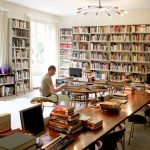 PhD/Postdoc Fellowships, Dutch University Institute for Art History, Florence PhD/Postdoc Fellowships, Dutch University Institute for Art History, Florence
Florence, Italy Application deadline: Jun 1, 2021
The Dutch University Institute for Art History in Florence (www.niki-florence.org) promotes research on Italian art, on Dutch and Flemish art and artists in Italy, and on the artistic relations between Italy and the North. It provides university scholars and students in art history with accommodation (including an apartment for a scholar-in-residence), research and publication opportunities, and the use of the library and photo-archives.
For the academic year 2021/22 the Institute offers a limited number of fellowships for postdoctoral researchers or Ph.D. students. These fellowships consist of up to € 350 (€ 700 for those affiliated to non-European universities) to cover . . . → En lire plus
Posté par Pascale Dubus, le 21 février 2021;
- Date de remise des propositions : 15 avril 2021
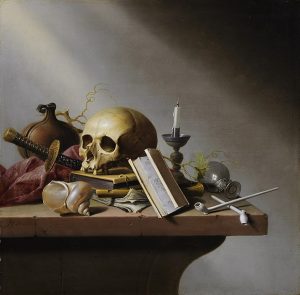 In premodern times, death was a more visible phenomenon than now, due to high mortality rates, but also to the fact that dying and death and the subsequent phases of deposition, bereavement and remembrance – more so than today – were collectively experienced, publicly performed, and commemorated in enduring monuments. Remembrance was held to extend into perpetuity, on personal grounds of love and affection, and for political and religious reasons, the latter normatively being related to the Christian doctrine of salvation, which, in Catholic contexts, called for unceasing prayer and other observances, like masses for the souls of the deceased. By continuing their existence . . . → En lire plus In premodern times, death was a more visible phenomenon than now, due to high mortality rates, but also to the fact that dying and death and the subsequent phases of deposition, bereavement and remembrance – more so than today – were collectively experienced, publicly performed, and commemorated in enduring monuments. Remembrance was held to extend into perpetuity, on personal grounds of love and affection, and for political and religious reasons, the latter normatively being related to the Christian doctrine of salvation, which, in Catholic contexts, called for unceasing prayer and other observances, like masses for the souls of the deceased. By continuing their existence . . . → En lire plus
Posté par Jan Dirk Baetens, le 4 juillet 2018;
 Revue : « Oud Holland » – new style Revue : « Oud Holland » – new style
The oldest surviving art-historical journal in the world is a nineteenth-century Dutch periodical. After 135 years of uninterrupted publication, Oud Holland is reinventing itself in 2018, with a broader editorial board and, in addition to the printed journal, a complementary new online platform.
Oud Holland is also expanding its scope in order to give a platform to high-quality research on Belgian and Dutch art of the ‘long’ nineteenth century. It is now actively seeking contributions in this field from scholars and museum professionals.
Open to both traditional and innovative approaches, Oud Holland is dedicated to publishing ambitious and original contributions . . . → En lire plus
Posté par Vladimir Nestorov, le 21 juin 2018;
- Date et lieu des journées d'études : 8-9 novembre 2018, Arras
- Date limite des propositions : 15 juillet 2018
 Appel à communication : « Portraits et représentations des anciens Pays-Bas (XVIe-XVIIe siècles) » (Arras, 8-9 novembre 2018) Argumentaire : Appel à communication : « Portraits et représentations des anciens Pays-Bas (XVIe-XVIIe siècles) » (Arras, 8-9 novembre 2018) Argumentaire :
Le programme de recherche pluridisciplinaire La Renaissance dans les Provinces du Nord a été lancé en 2015. Son objectif est d’étudier – en croisant la diversité des sources, approches et thématiques – la singularité des provinces septentrionales de la France et celles des anciens Pays-Bas (Artois, Brabant, Flandre, Hainaut, Picardie), carrefour d’influences et creuset artistique, à une époque à la fois d’intenses conflits politiques et religieux, mais aussi de foisonnement culturel, celle de la Renaissance considérée sur le temps long de la fin xve au milieu du xviie . . . → En lire plus
Posté par Matthieu Lett, le 16 mai 2018;
- Date et lieu du colloque : 31 mai-1er juin 2018, Université de Genève, Uni Dufour, salle U260
 The ambiguity of the Dutch notion of the Golden Age (gulden ou gouden eeuw), which first appears during the second part of the sixteenth century, is intriguing. It refers firstly to the golden age, as it was described by Greek and Roman authors, a mythical society that existed under the protection of Saturn, in peace and happiness and in harmony with nature. But the notion is also used by the Dutch themselves to designate the society that they were part of – or wished to be part of – , after the independence of the United Provinces from the Spanish reign. As a . . . → En lire plus The ambiguity of the Dutch notion of the Golden Age (gulden ou gouden eeuw), which first appears during the second part of the sixteenth century, is intriguing. It refers firstly to the golden age, as it was described by Greek and Roman authors, a mythical society that existed under the protection of Saturn, in peace and happiness and in harmony with nature. But the notion is also used by the Dutch themselves to designate the society that they were part of – or wished to be part of – , after the independence of the United Provinces from the Spanish reign. As a . . . → En lire plus
Posté par laurafanti, le 8 mai 2018;
- Date et lieu du colloque : 26-27 octobre 2018
- Date limite des propositions : 4 juin 2018
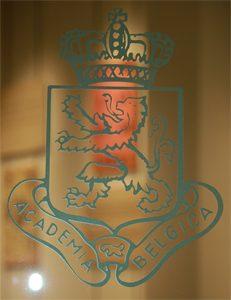 Appel à communication : « La gravure belge et néerlandaise en Italie au début du XXe siècle » (Rome, 26-27 octobre 2018) Appel à communication : « La gravure belge et néerlandaise en Italie au début du XXe siècle » (Rome, 26-27 octobre 2018)
Conférence internationale, Rome, Academia Belgica- Koninklijk Nederlands Instituut, 26-27 octobre 2018.
La présence de nombreuses gravures néerlandaises et belges dans les expositions consacrées à la gravure en Italie au début du XXe siècle est un phénomène qui, bien que négligé aujourd’hui par la recherche, a été fondamental pour cette heureuse saison marquée par un regain d’intérêt pour les arts du Bianco e Nero. Cette présentation systématique d’œuvres graphiques, à partir de la première Biennale Internationale d’Art de Venise, en 1895, est née en Italie d’une volonté indiscutable de renouvellement, qui s’intéressait . . . → En lire plus
Posté par Vladimir Nestorov, le 8 mars 2018;
- Date et lieu du colloque : 18-20 octobre 2018, La Haye
- Date limite des propositions : 15 avril 2018.
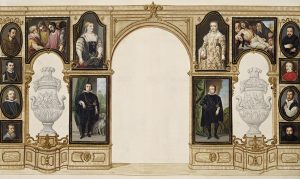 Appel à communication : « Collecting Dutch and Flemish Art in Germany » (La Haye, 18-20 octobre 2018) Appel à communication : « Collecting Dutch and Flemish Art in Germany » (La Haye, 18-20 octobre 2018)
Much of Dutch and Flemish Art was acquired by German collectors, so that today there are more of these artefacts in German collections than in those of other countries. The 2018 conference of the ANKK seeks to analyse the ways in which Netherlandish art was and is collected in the German speaking countries, and how this influenced not only scholarship but also the art market.
The German organisation for the Study of Netherlandish Art and Culture (Arbeitskreis Niederländische Kunst- und Kulturgeschichte e.V.) will hold its decennial as an . . . → En lire plus
Posté par Leonard Pouy, le 15 février 2018;
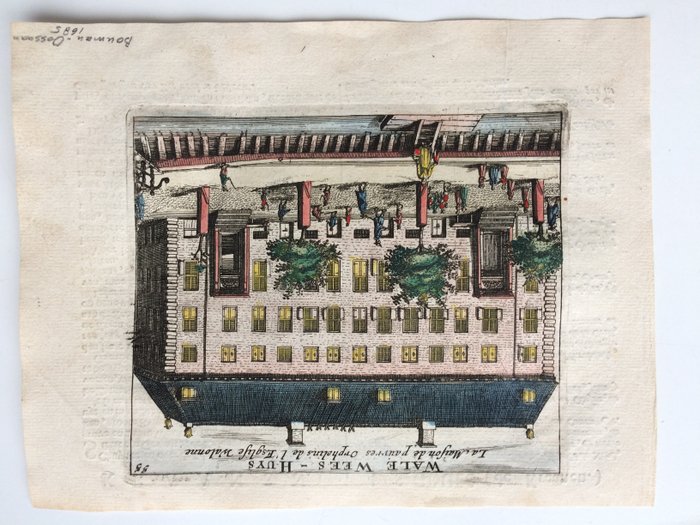
Appel à manifestation d’intérêt : projet de constitution d’un GIS Réseau France-Flandre-Pays-Bas
Réseau France-Flandre-Pays-Bas. Réseau d’enseignement supérieur, de recherche et de coopération internationale
L’Université de Lille lance un appel à manifestation d’intérêt pour la création d’un groupement d’intérêt scientifique (GIS) « Réseau France-Flandre-Pays-Bas », toutes disciplines confondues. Son organisation en réseau permettra d’associer enseignants, chercheurs, professionnels de l’information scientifique, partenaires non universitaires issus de milieux économiques, politiques, diplomatiques et médiatiques et de soutenir la réalisation d’actions communes pour renforcer la coopération scientifique et universitaire essentiellement avec les Pays-Bas et la Flandre.
Ce GIS sera constitué à partir du Réseau Franco-Néerlandais de l’enseignement supérieur et de la recherche (RFN) déjà existant (www.nlfr.eu), réseau national financé par le MEAE, l’ambassade de France aux Pays-Bas, le . . . → En lire plus
Posté par Leonard Pouy, le 2 novembre 2017;

Lancement du carnet en ligne des Amis de l’art nordique (AARNO)
Lancé en 2017, l’AARNO se propose de réunir la communauté des spécialistes modernistes des arts flamand, hollandais, germanique et scandinave actuellement actifs en France et ce, tant dans les domaines de la recherche et de l’enseignement universitaire que de la conservation et de la restauration, du commissariat d’exposition ou du marché de l’art.
Ce carnet en ligne est ainsi destiné à rassembler, relayer et publier les activités liées à ce nouveau réseau, libre, ouvert et informel, de spécialistes français ou francophones, mais aussi à commenter et enrichir, tout évènement qui pourrait lui être soumis (exposition artistique, publication d’ouvrage ou de base de . . . → En lire plus
Posté par Leonard Pouy, le 2 novembre 2017;
- Date de parution : Hiver 2018
- Date limite des propositions : 15 janvier 2018
- Date de remise des articles : 1er mai 2018
 Appel à communication : « Netherlands Yearbook for History of Art, issue: Connoisseurship » (Nederlands Kunsthistorisch Jaarboek, vol.69, 2019) Appel à communication : « Netherlands Yearbook for History of Art, issue: Connoisseurship » (Nederlands Kunsthistorisch Jaarboek, vol.69, 2019)
Connoisseurship and the Knowledge of Art in the Netherlands, 1400 to the present.
Connoisseurship has long been suspect. Though essential to the study of material objects, it has been opposed to the more ‘substantive’ discipline of academic art history, and reviled as outmoded and elitist, as tainted by the market, and as concerned merely with such artist-reifying/mystifying issues as attribution, authenticity and the autograph ‘hand’. The connoisseur – with typically his ‘eye’ – has been dismissed as a dinosaur.
Yet, the practice of connoisseurship has continued apace – indeed, has been reinvented – in print rooms and museums, in the venues of the art market, . . . → En lire plus
Posté par Leonard Pouy, le 20 octobre 2017;
- Date et lieu du colloque : 4 novembre 2017, Harvard Art Museums, Cambridge, MA
 Colloque : « Dutch Drawings on the Horizon: A Day of Talks in Honor of George S. Abrams » (Cambridge, MA, 4 novembre 2017) Colloque : « Dutch Drawings on the Horizon: A Day of Talks in Honor of George S. Abrams » (Cambridge, MA, 4 novembre 2017)
This symposium brings together international experts on 17th-century Dutch drawings in honor of George S. Abrams (Harvard College ’54, Harvard Law ’57). Mr. Abrams and his late wife, Maida, pioneered the collecting of Dutch drawings in the United States and have been a unifying force for study and scholarship in the field. Their generous gift of 110 works in 1999 transformed the Harvard Art Museums’ Dutch drawings collection into one of the most comprehensive in any U.S. museum. Speakers will use the vast breadth and depth of the Abrams Collection as a touchstone for discussing the exceptional draftsmanship of . . . → En lire plus
Posté par Leonard Pouy, le 13 juillet 2017;
- Date du colloque : 12-14 septembre 2018, Bruxelles
- Date limite : 30 octobre 2017
 The Bruegel success story (Brussels, 12-14 september 2018) Symposium XXI for the Study of Underdrawing and Technology in Painting The Bruegel success story (Brussels, 12-14 september 2018) Symposium XXI for the Study of Underdrawing and Technology in Painting
Call for papers. Deadline 30 October 2017
In preparation for Symposium XXI for the Study of Underdrawing and Technology in Painting. The Bruegel Success Story. Creative Process, Imitation, Emulation, Workshop Organization and Business Strategies, the Royal Institute for Cultural Heritage (KIK-IRPA, Belgium) and the Royal Museums of Fine Arts of Belgium (MRBAB) invite you to present an abstract on one of the following themes concerning the Bruegel dynasty, defined here as Pieter Bruegel the Elder and his artistic progeny:
Technical studies concerning paintings, drawings and prints by the Bruegel dynasty. Workshop organisation and collaboration within and outside the workshop in relation to the Bruegel dynasty. . . . → En lire plus
Posté par Leonard Pouy, le 13 juillet 2017;
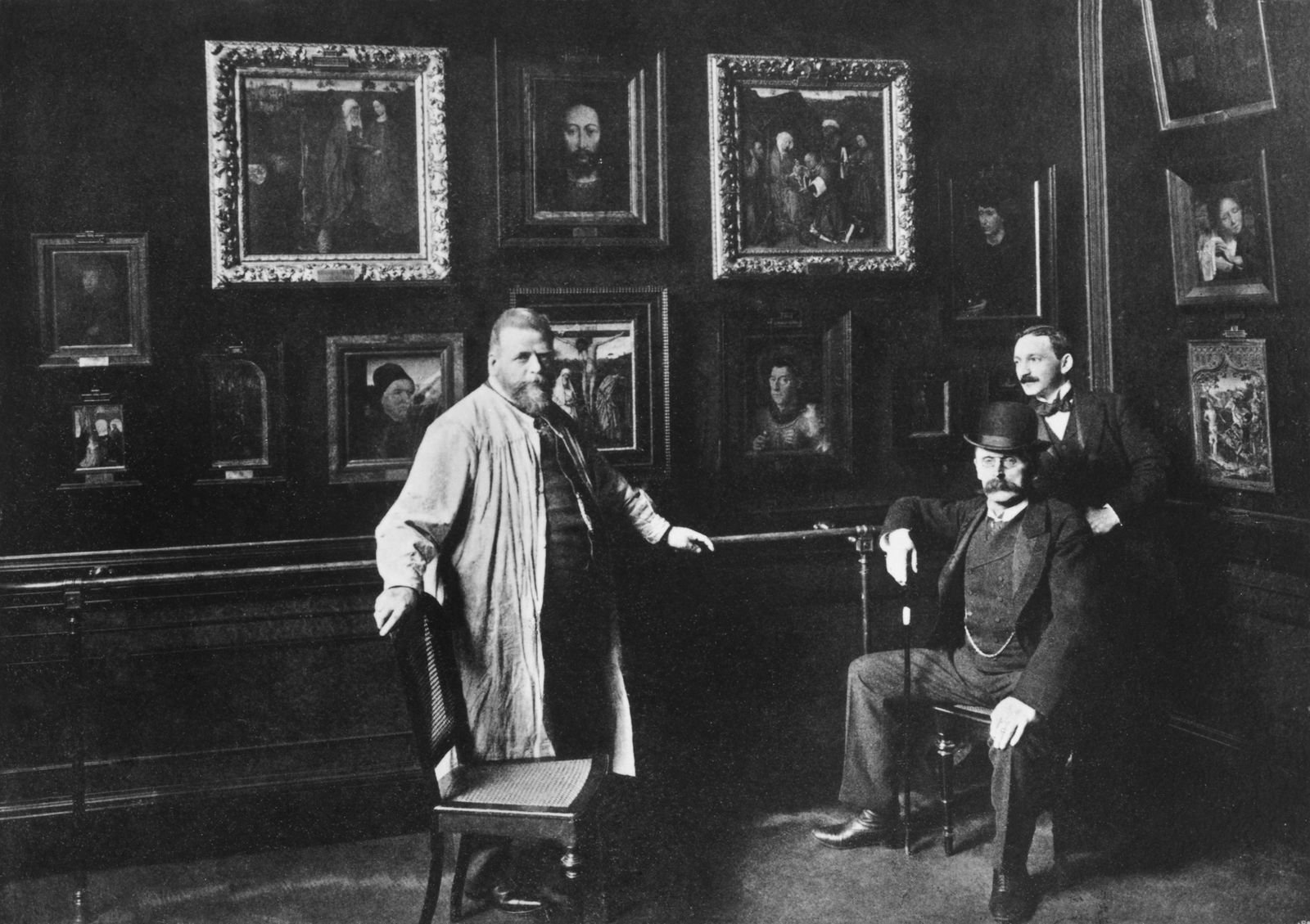
Last Thursday, The Royal Institute for Cultural Heritage (KIK-IRPA, Brussels) presented the Friedländer 3.0 database, developed by the Centre for the Study of the Flemish Primitives. The presentation took place in the Rijksmuseum during the international symposium on the occasion of the 150th birthday of Max J. Friedländer. This project is the first to offer online all fourteen volumes of Friedländer’s English edition of Early Netherlandish Painting (1967-1976), downloadable and searchable by OCR (optical character recognition). It also offers an online database in which all records of paintings in this edition are included, updated and extended with the records of the Centre for the Study of the Flemish Primitives. With this web tool, the Royal Institute for Cultural Heritage makes the unique . . . → En lire plus
Posté par Matthieu Lett, le 9 juin 2017;
- Date et lieu du colloque : 31 mai-2 juin 2018, université de Genève
- Date limite : 1er octobre 2017
 « En ce temps, c’était un âge d’or pour l’art ; et les pommes d’or (que l’on ne trouve qu’avec difficulté aujourd’hui, par des chemins difficiles et à la sueur de son front) tombaient d’elles-mêmes dans la bouche des artistes ». « En ce temps, c’était un âge d’or pour l’art ; et les pommes d’or (que l’on ne trouve qu’avec difficulté aujourd’hui, par des chemins difficiles et à la sueur de son front) tombaient d’elles-mêmes dans la bouche des artistes ».
Arnold Houbraken, De groote schouburgh der nederlantsche konstschilders en schilderessen, 1718-1721[1]
En 1719, le peintre Arnold Houbraken semble regretter la prospérité qui prévalait dans les Provinces-Unies du milieu du xviie siècle. Pour qualifier cette période favorable aux artistes, il parle d’un « âge d’or pour l’art » (Gulde Eeuw voor de Konst). Mais de quoi parle-t-il exactement ? Le mot eeuw . . . → En lire plus
Posté par Sébastien Bontemps, le 12 avril 2017;
- Date et lieu : 24-26 mai 2018, Gand, 24-26 mai 2018, Gand, 24-26 mai 2018, Gand
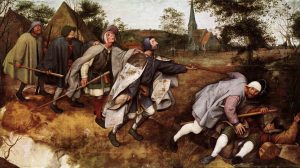 Historians of Netherlandish Art Conference (Ghent, 24-26 May 2018) Ghent, HNA Conference Deadline: May 15, 2017 [1] Bruegel’s Politics Among the most unforgettable lines from Karel van Mander’s biography of Pieter Bruegel the Elder are those that concern the artist’s final hours. Bruegel, on his deathbed, asked his wife to burn some of his works “either because he was sorry or because he was afraid that on their account, she would get into trouble or might have to answer for them.” The implication that Bruegel produced a body of images of a polemic if not overtly political nature has long haunted scholarship on the artist. . . . → En lire plus Historians of Netherlandish Art Conference (Ghent, 24-26 May 2018) Ghent, HNA Conference Deadline: May 15, 2017 [1] Bruegel’s Politics Among the most unforgettable lines from Karel van Mander’s biography of Pieter Bruegel the Elder are those that concern the artist’s final hours. Bruegel, on his deathbed, asked his wife to burn some of his works “either because he was sorry or because he was afraid that on their account, she would get into trouble or might have to answer for them.” The implication that Bruegel produced a body of images of a polemic if not overtly political nature has long haunted scholarship on the artist. . . . → En lire plus
Posté par Denis Dubois, le 15 octobre 2016;
- Date limite : 8 décembre 2016
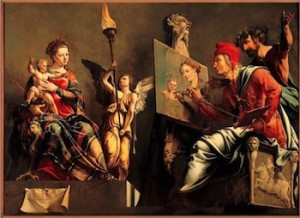 With his 1692 treatise The Big World Painted Small, Willem Beurs published the first manual on how to paint with oil and dedicated it to his four female pupils. Apart from describing how to paint, the manual touches upon recent scientific developments in biology and physics and references Greek and Chinese art, thus suggesting that Beurs expected his readership to perceive painting as part of a wider cultural framework. The treatise opened up the secluded transfer of specialized artistic knowledge, made it available to a wider crowd and anticipated eighteenth-century’s strategies of public instruction and education; including Dutch adaptions of Diderot’s Encyclopédie. With his 1692 treatise The Big World Painted Small, Willem Beurs published the first manual on how to paint with oil and dedicated it to his four female pupils. Apart from describing how to paint, the manual touches upon recent scientific developments in biology and physics and references Greek and Chinese art, thus suggesting that Beurs expected his readership to perceive painting as part of a wider cultural framework. The treatise opened up the secluded transfer of specialized artistic knowledge, made it available to a wider crowd and anticipated eighteenth-century’s strategies of public instruction and education; including Dutch adaptions of Diderot’s Encyclopédie.
As a consequence of the recent focus . . . → En lire plus
Posté par Terra Fondation for American Art Europe, le 8 février 2016;
- Date et lieu des rencontres : Février-avril 2016, Paris, Terra Foundation Paris Center
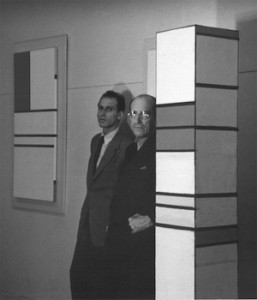 To celebrate our recent move next to the Fondation Custodia, an institution dedicated for more than a century to Dutch and Flemish art, the Paris Center & Library is hosting an exceptional series of dialogues focused on cultural exchange between Holland and America. To celebrate our recent move next to the Fondation Custodia, an institution dedicated for more than a century to Dutch and Flemish art, the Paris Center & Library is hosting an exceptional series of dialogues focused on cultural exchange between Holland and America.
Running from February to April 2016, the dialogues will bring together international scholars and curators to evoke four particular moments in this shared cultural history.
“In Search of Utopia: The New World in the European Imaginary,” February 18 “‘Delirious New Amsterdam’: Art, Material Culture, and Circulation in New . . . → En lire plus
|
Équipe Rédacteur en chef : Olivier Bonfait.
Rédacteurs : Elliot Adam (Moyen Age) ; Nicolas Ballet (XX-XXIe siècles) ; Matthieu Fantoni (musées) ; Antonella Fenech Kroke (bourses) ; Vladimir Nestorov (Lettre mensuelle)
Administrateur web : Matthieu Lett.
ancien éditeur : Pascale Dubus
anciens rédacteurs : Gautier Anceau, Sébastien Bontemps, Damien Bril ; Sébastien Chauffour ; Ludovic Jouvet ; Aude Prigot
|
 3 PhD positions in Art History, University of Utrecht
3 PhD positions in Art History, University of Utrecht











 Appel à communication : « Netherlands Yearbook for History of Art, issue: Connoisseurship » (Nederlands Kunsthistorisch Jaarboek, vol.69, 2019)
Appel à communication : « Netherlands Yearbook for History of Art, issue: Connoisseurship » (Nederlands Kunsthistorisch Jaarboek, vol.69, 2019)  Colloque : « Dutch Drawings on the Horizon: A Day of Talks in Honor of George S. Abrams » (Cambridge, MA, 4 novembre 2017)
Colloque : « Dutch Drawings on the Horizon: A Day of Talks in Honor of George S. Abrams » (Cambridge, MA, 4 novembre 2017)  The Bruegel success story (Brussels, 12-14 september 2018) Symposium XXI for the Study of Underdrawing and Technology in Painting
The Bruegel success story (Brussels, 12-14 september 2018) Symposium XXI for the Study of Underdrawing and Technology in Painting



